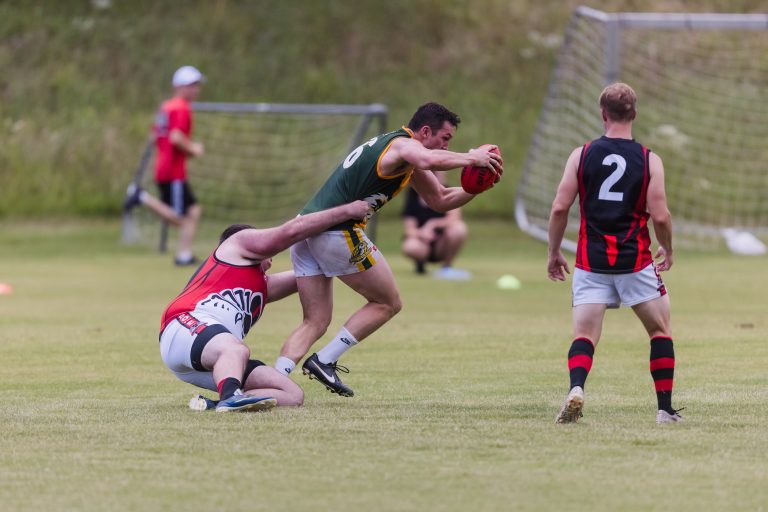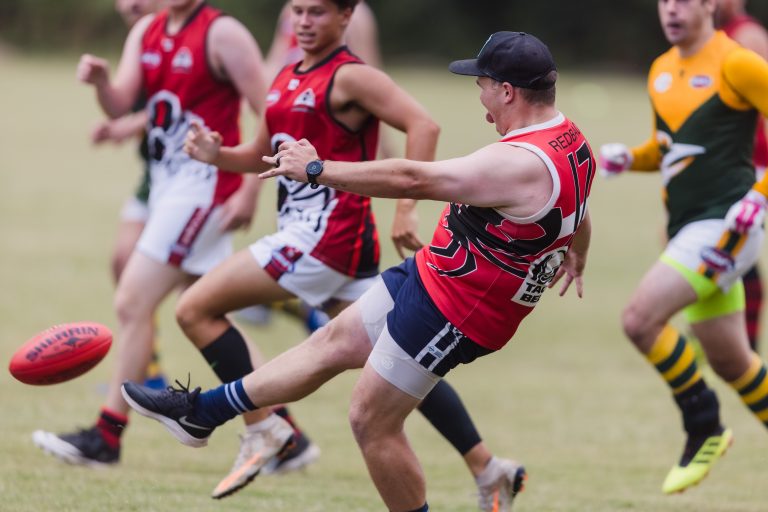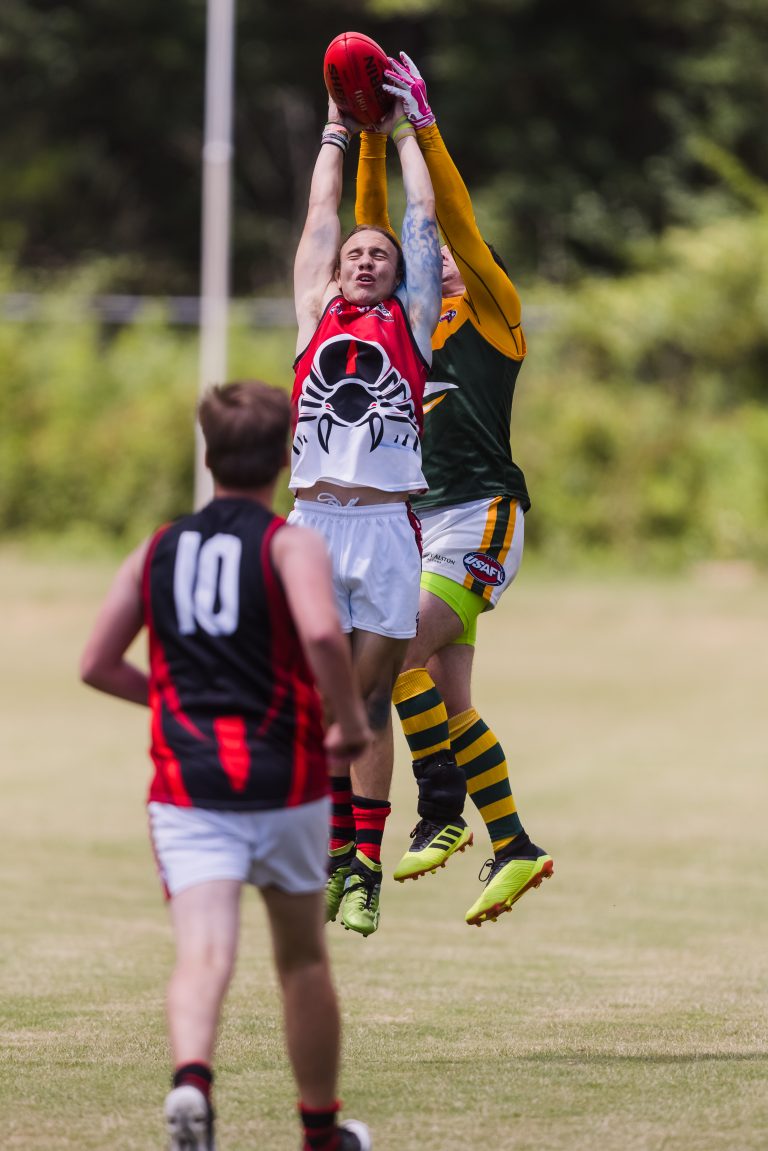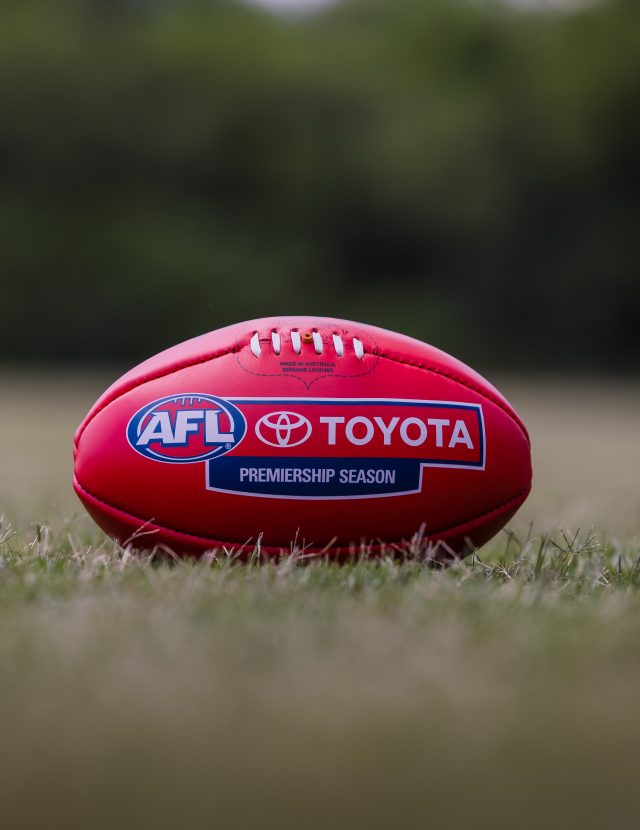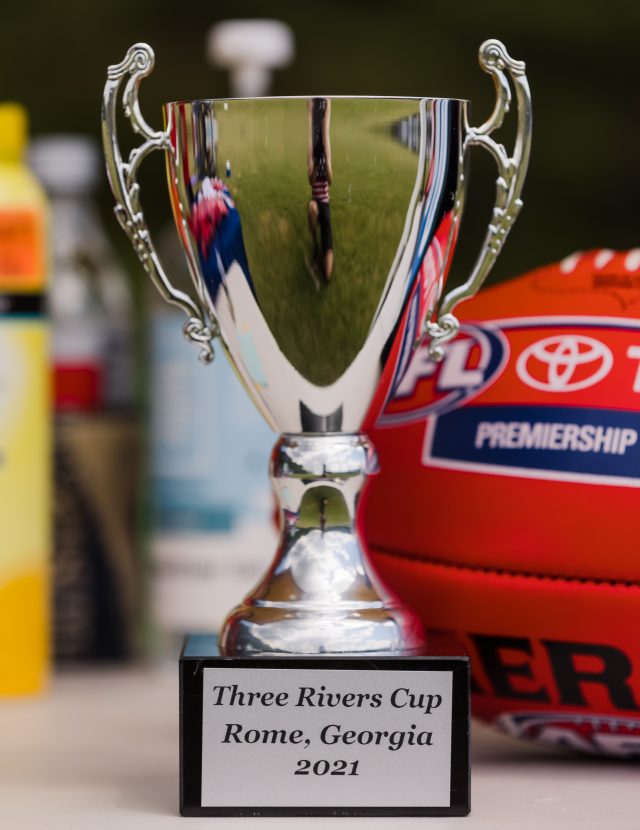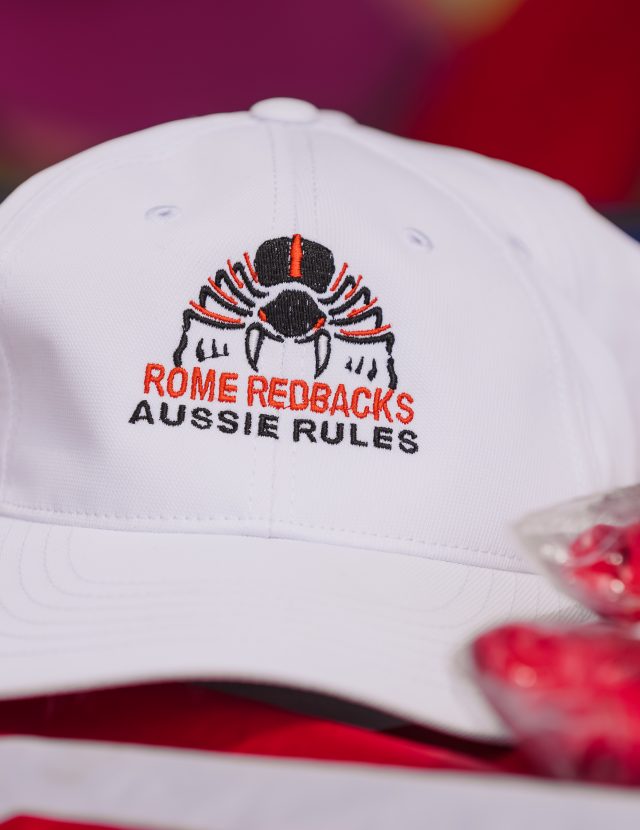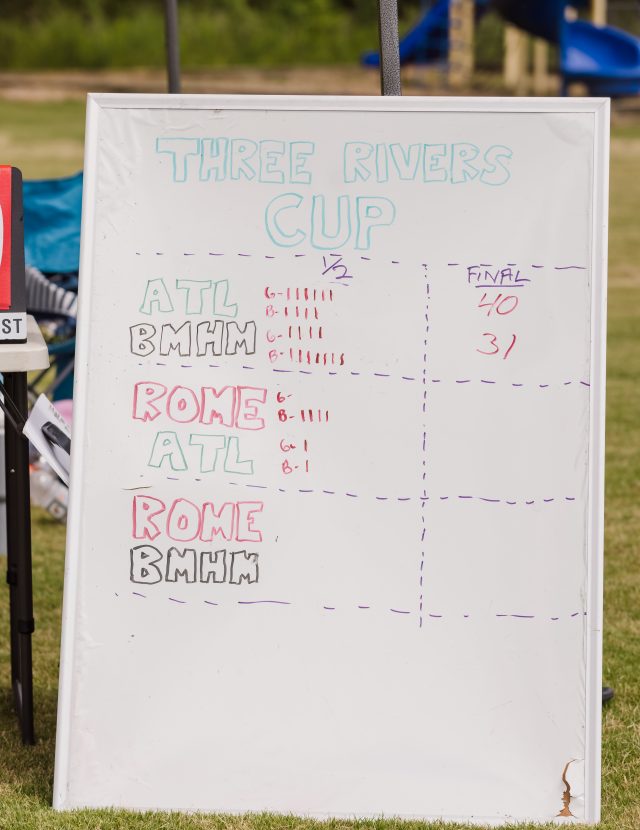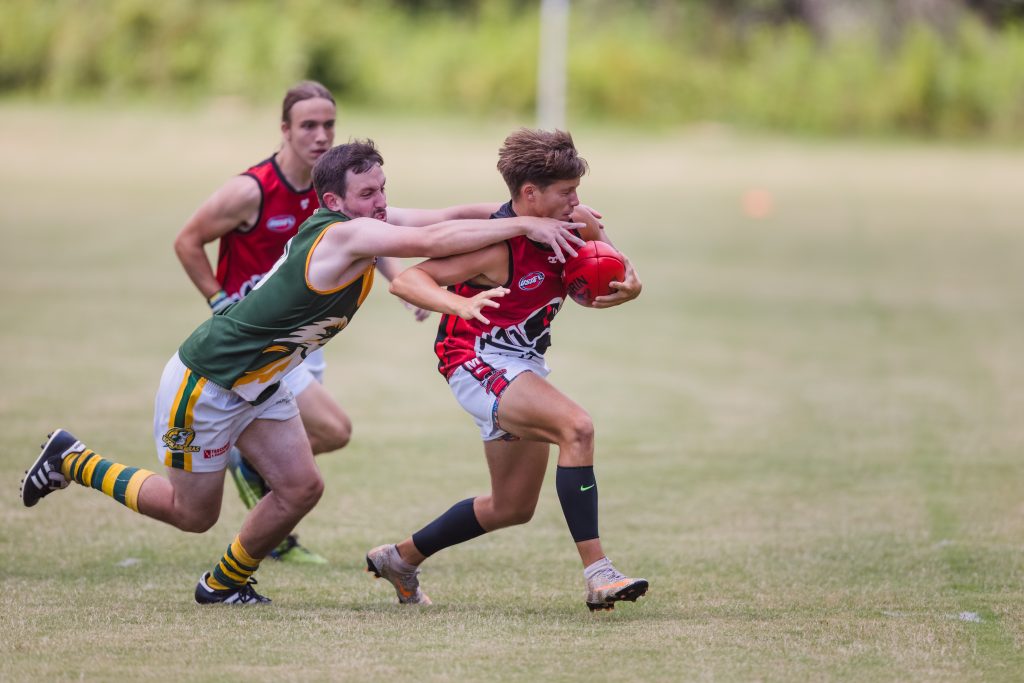
Australian rules football. Isn’t that just rugby by another name? According to Wayne Kraska, coach of the Rome Redbacks, the answer is a decided “NO!” He describes it as far more fun and exciting than rugby. “Yes, it has running,” he says. “Yes, it has kicking. Yes, it has bodies crashing into each other, without pads. But that still doesn’t make it rugby.”
It’s Australian rules football, also referred to as Aussie rules football or footy. It is the biggest sport in Australia, it has the fourth largest attendance of all major domestic sports in the world, and the playing field is larger than that of any other sport.
From Down Under to Northwest Georgia
The Australian Rules Football Club has made its way to Rome, Georgia, as the Rome Redbacks. This happened thanks to the passion and drive of Coach Wayne Kraska, who moved to the United States from Australia about twenty years ago. “Because of the Australian Consulate in Atlanta,” Kraska says, “Aussies were always coming to or through Atlanta.”
In America, he started with an Atlanta club, the Kookaburras, that had been established in the 1990s and was a part of a fifteen-team league that spanned the country. He was with them for eighteen years. “Because of the consulate, it wasn’t hard to find Australians to play,” Kraska says, “and Americans joined in, too, so we were able to have a club.”
About five years ago, Kraska moved to Rome. “During my first couple of years here, I was still a part of the Kookaburras,” he says, “but I decided to leave that and start a club here in Rome.” He began recruiting players and founded the Rome Redbacks. The team was named after the notorious redback spider, also known as the Australian black widow, a venomous spider found in Southeast Asia, Australia, and New Zealand.
A growing league
The Rome Redbacks are part of the United States Australian Football League (USAFL), a non-profit amateur sports organization founded in 1997. The USAFL is the sole representative of Australian football in the United States.
The league’s website presently lists 49 clubs; that number nearly doubles with the fact that many of those clubs have both a men’s team and a women’s team. Like the Rome Redbacks and the Atlanta Kookaburras, some of these clubs chose for themselves distinctively Aussie names, such as the Birmingham Bushrangers, the Dallas Dingoes, the Nashville Kangaroos, the Wisconsin Wombats, and the New York Magpies.
The USAFL has until now followed a one-team-per-major-city or state growth plan, a plan of which Kraska is not a huge fan. “I don’t care for that. We should have developed more regional clubs like the one here in Rome,” he says. “That’s what I’m working on now, developing regional clubs here in the Southeast. I want to introduce and develop clubs in places like Augusta, Greenville, Huntsville, Birmingham, and cities like that.”
A bird’s eye view
Viewed from above, a USAFL playing field is shaped more or less like the game’s football: oval. That is by design, for the field is modeled after the cricket oval. The size of the playing fields can vary from venue to venue. Though there is no exact standard for dimensions for the game field (also called ground or paddock), Australia’s Melbourne Cricket Grounds is widely considered the ideal at approximately 541 feet long by 442 feet wide.
The game ball, called a Sherrin, (imported from Australia) is made of Aussie cowhide, egg-shaped, and bounces in a different way from a rugby ball or an American football. Like other sports, the object of the game is to move the ball downfield and score. Players can move the ball in three different ways: they can run it, but it must bounce once every sixteen yards; they can punch it forward with their fist, which is called a handball; or they can kick it, which is the most common method.
The goals are two sets of posts (two tall, two smaller) erected at opposite ends of the oval. The taller goal posts are set seven yards apart and stand just over nineteen feet tall. The goal posts are often padded, in case of collisions. The goal square (a rectangle, actually) is painted on the ground and extends some 10 yards from the goal line. If a ball passes between the goal posts—kicked without otherwise being touched—that earns six points.
If the ball passes between the behind posts by any other means, it is called a behind and is worth one point. If, however, the ball hits a goal post—despite where it bounces afterward—that’s one point. This scoring system makes for an exciting game, as it often allows high scores. Like most sports (of course, excluding golf), the team with the highest score when the clock runs out is the winner.
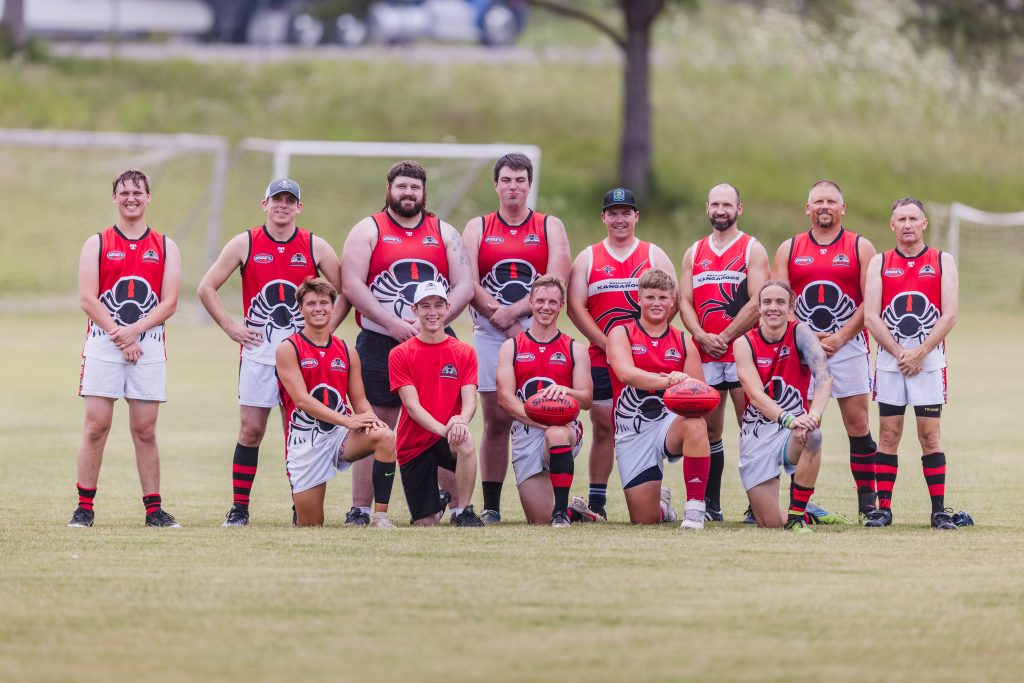
The game is generally divided into four quarters of twenty minutes each, with halftime lasting for fifteen minutes. During the game, time can be stopped for four reasons: if a goal is scored, if a behind is scored, if a ball goes out of bounds, or if an umpire signals for time to be stopped due to injury.
As for uniforms, they are more along the lines of what Americans might expect to see soccer players wear. No padding is worn, despite the tackling. Mouthguards, soft protective headgear, and shin guards are permitted. For safety reasons, wearing jewelry is prohibited.
Fitness by football
A passion for Australian rules football was not Kraska’s only motivation for bringing the sport to Rome and Floyd County; he also wanted to help people become fitter and healthier, to make plenty of new friends, and have fun, too.
“Rome has very few Australian residents, so we try to get American players to join us, and then get them to recruit new players,” Kraska says. “We introduce the game to American people, and they like it. In America now, roughly 75-80% of the participants are American. In Rome and Atlanta, it’s over 90% American players. It’s a fun sport to play, and people who give it a chance really fall in love with it.”
It’s all about the fun
Kraska wants everyone to know that anyone can play this game. He explains, “Here in Rome we play the tackle game as well as a social version of the game, which consists of no tackling or contact. We play the social version on Sunday afternoons all year long, weather permitting.”
The teams for the social version can also be co-ed. “For that, we supply the shirts and all the equipment,” Kraska says. “Everything is free. You can’t get much better than that for a free community sport.” He adds, “It’s a very safe way to participate for anyone ages 12-72. And yes, we’ve had 70-year-olds come and play, as well as 12-year-olds. The social version is good fun, and it’s great exercise for one and all.”
Kraska points out that for those who want to play more seriously, they can move up to the travel games. “This is a community sport, and that’s the way it is played in Australia. There, it’s more of a community sport than a school sport, actually, as are most sports in Australia.” For an example, if there were more USAFL teams in Northwest Georgia, Rome would play Calhoun, or Lindale, or Cartersville as city or community teams, not as a high school or college teams.
Women tackle, too
Nationwide, women are discovering that footy not only offers them participation in a fun, fast-paced, high scoring game, but it also gives them a chance to play a tackle sport. “Women do participate in the women’s tackle league,” Kraska explains. “While the numbers are still low, as there aren’t many participants in the Southeast, there are active clubs around the country.” He goes on to say, “I was once the coach of the women’s national team, the USA Freedom, from 2005-2011. I traveled with them around the world to places like Australia, Canada, and others. The women’s game is not as big as the men’s game at the moment, but the interest is growing.”
Don’t wait, go play!
At present, the Rome Redbacks’ travel schedule is still affected by the ongoing pandemic issues. “We’re being impacted by COVID, so we have to make adjustments all the time,” Kraska explains. “Clubs generally make up their own schedules, as we’re not dictated by a schedule through the USAFL. We can go and play any team in the country that we’d like. With adequate advance notice, obviously.”
Despite that, there is still plenty of opportunity to have lots of good fun right here in Rome. Australian rules football is an equal-opportunity sport. “In footy,” Kraska says, “everyone is a quarterback, as there are no differences in any player. To play, you have to learn everything. And anyone can score!”
To check out the Rome Redbacks and to get more information, visit romeredbacks.com or go see them in person by checking out practice and league games. In November the Redbacks are playing mini metro tackle games on Saturdays and Social family footy on Sundays, both 3:00pm at Riverside Baptist Church Park, Ash Street NE, Rome (just off Riverside Parkway near the Rome Braves Stadium). Go watch or even play!



